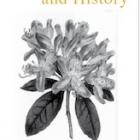Griggs, Peter. “Soil Erosion, Scientists and the Development of Conservation Tillage Techniques in the Queensland Sugar Industry, 1935–1995.” Environment and History 12, no. 3 (Aug., 2006): 233–68. doi:10.3197/096734006778226364.
Soil erosion throughout Queensland’s sugar cane producing lands emerged as a significant problem in the 1930s. Poor farming techniques such as leaving fallow land or fields with young crops bare during the wetter summer months and cultivating sloping land were blamed for this environmental problem. Drawing upon archival documents, government reports and published accounts of agricultural scientists, this paper aims to document how officers of the Queensland Bureau of Sugar Experiment Stations and the Soil Conservation Branch of the Queensland Department of Agriculture and Stock (later Primary Industries) tried developing soil conservation methods suited to land cropped with sugar cane. The conclusion from the historical analysis is that many Queensland canegrowers before 1980 were very slow to adopt the soil conservation methods advocated by the agricultural scientists, even though they acknowledged that soil erosion was a problem. This reluctance to ‘save the land’ changed during the 1980s following the emergence of an agricultural practice known as trash blanketing. The ease of its implementation and associated reduction in tillage costs contributed to its rapid uptake.
All rights reserved. © 2006 The White Horse Press


